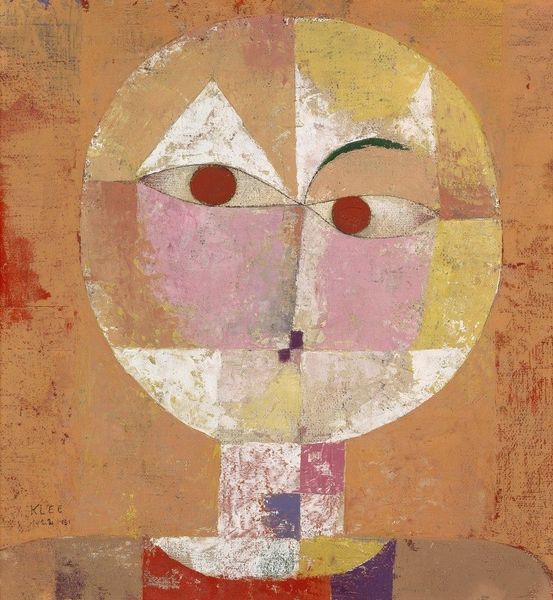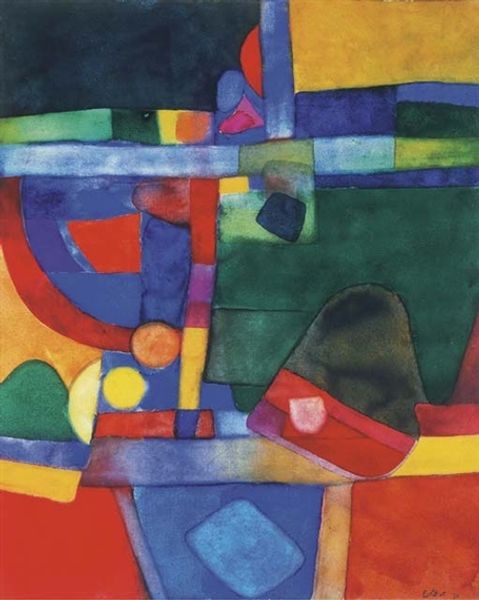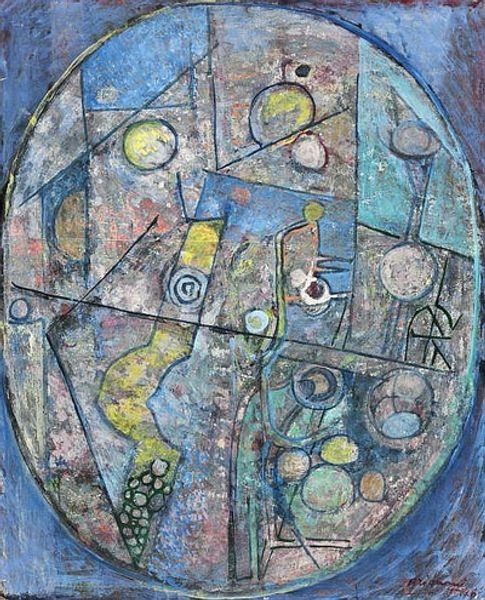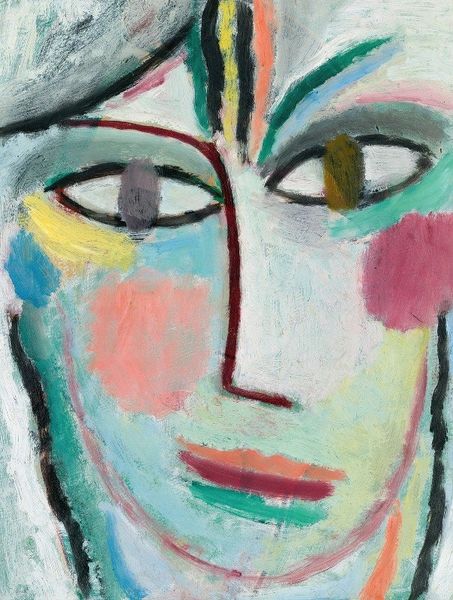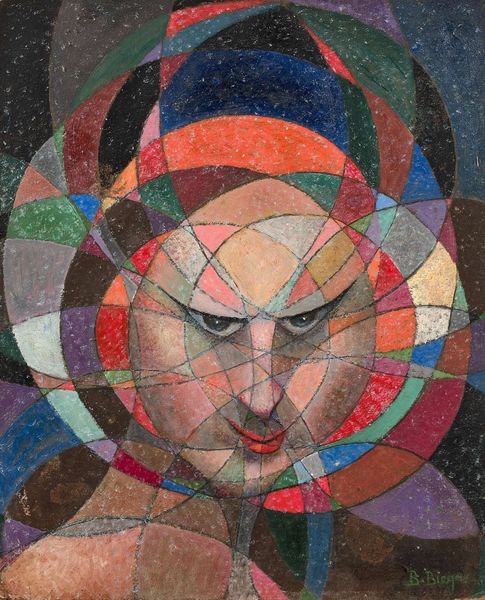
mixed-media, painting
#
portrait
#
cubism
#
mixed-media
#
abstract painting
#
painting
#
painted
#
possibly oil pastel
#
handmade artwork painting
#
geometric
#
abstraction
#
painting painterly
#
surrealism
Copyright: Victor Brauner,Fair Use
Curator: Looking at this canvas, I immediately feel a strange calm. The colours, despite being quite vivid, are somehow soothing. It has a simple geometric structure and almost childlike naivete that I find really appealing. Editor: You're right, there's a compelling tension. We’re looking at Victor Brauner’s “Additivité spatiale” created around 1956. Brauner, significantly associated with Surrealism, had a fascinating life, marked by political upheaval and exile. Curator: Ah, that adds another layer. I wasn’t familiar with the piece but Surrealism makes perfect sense given the fragmented composition. Do you think the use of mixed-media lends to the overall fractured sense? Editor: Precisely. It reflects the fragmentation of identity and the displacement Brauner experienced. He saw the canvas as a space for symbolic exploration, confronting political themes while exploring his own anxieties. We see this use of the face or abstracted figure regularly during that time. Curator: It's interesting how a seemingly simple grid, filled with colours, can be so charged. The eyes, in particular, are very striking. It almost feels like they're observing us, the viewers. Do you feel it has the kind of revolutionary agenda that we see from a lot of political artists, though? Editor: His works often reflect the tumultuous socio-political landscape, viewed through the lens of personal experience. So not overt like a propagandist piece, but an introspective commentary of the world as he encountered it. The materials Brauner worked with, their availability or limitations perhaps shaped his visual vocabulary. This adds a concrete dimension to how socio-political forces influence the means of artistic production and expression. Curator: Thank you for helping me put this into a broader social and historical frame. I’m also fascinated by how Brauner was committed to working within and against Cubist constraints, creating his own visual lexicon in response to that framework. Editor: Of course! This has really deepened my perspective of how Brauner uses this composition to address how individual experience echoes broader cultural trauma and reinvention through artistic creation.
Comments
No comments
Be the first to comment and join the conversation on the ultimate creative platform.
